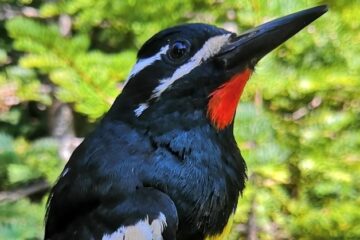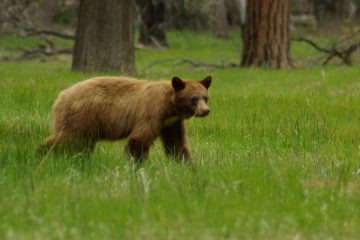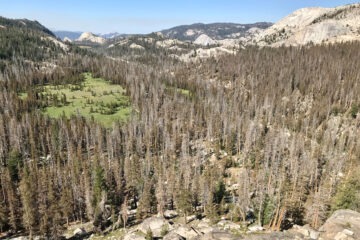It’s no secret that 2020 has been a tough year. The COVID-19 pandemic prompted the Conservancy to cancel many of our originally planned in-person programs and events. Yosemite closed temporarily in the spring, to protect public health; wildfire smoke led to another closure in late summer.
And amid the upheaval that has marked the past many months, we’re deeply grateful for the steadfast generosity of people who love the park!
We’ve carefully relaunched some in-person activities, including new storytelling evening programs, with special coronavirus precautions in place; set up a “to go” outdoor store at the Valley Visitor Center so people could purchase books and gear safely; and shifted donor events online. And your support is helping our partners in the National Park Service move forward with dozens of important projects, including to…
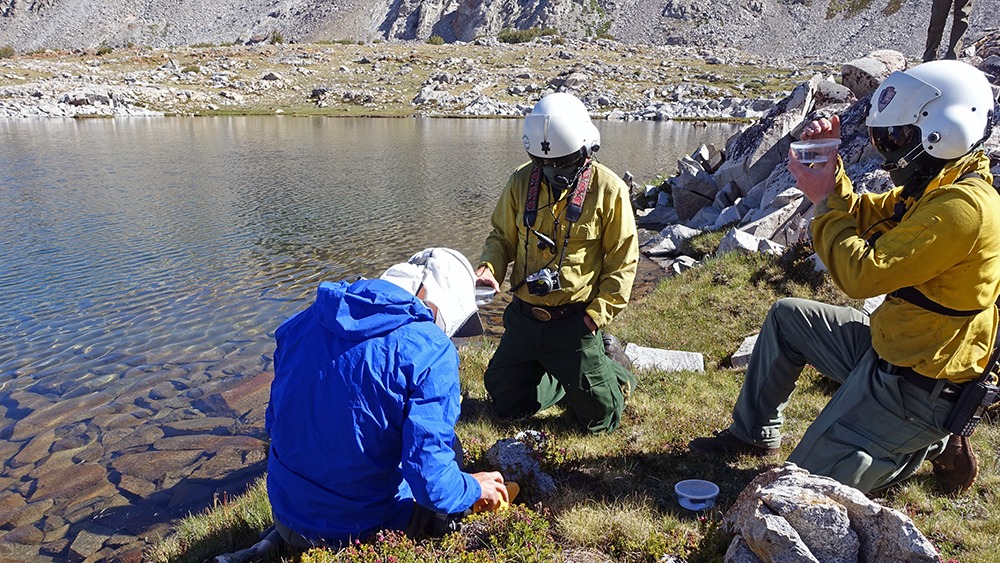
Releasing Sierra Nevada yellow-legged frogs at a lake in Yosemite’s high country. Photo: NPS.
… protect wildlife. So far this year, park crews have installed 60 new bear-resistant food lockers at Wawona Campground, released more than 100 endangered Sierra Nevada yellow-legged frogs in high country lakes, and monitored 15 active peregrine nest sites — six of which were new this year! Biologists are also using passive microchip readers to track previously released California red-legged frogs in Yosemite Valley.
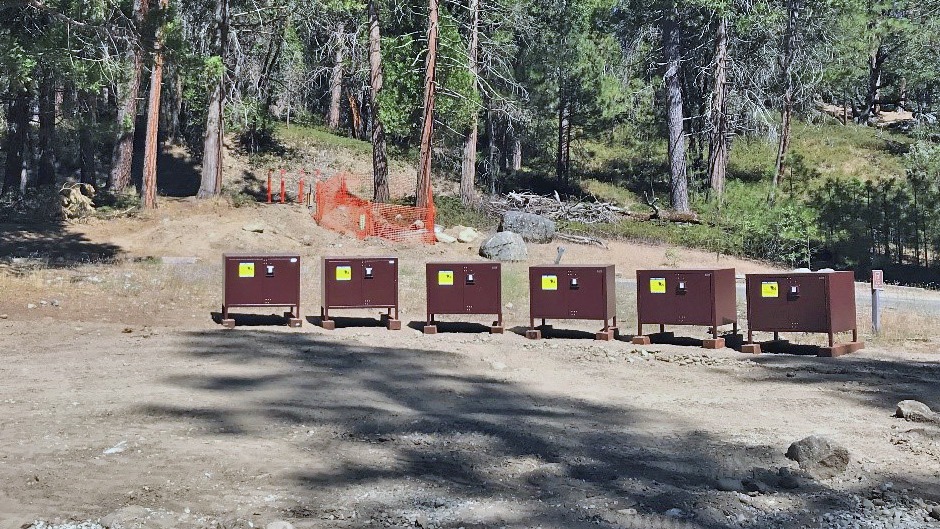
New bear-resistant food lockers in Wawona. Photo: NPS.
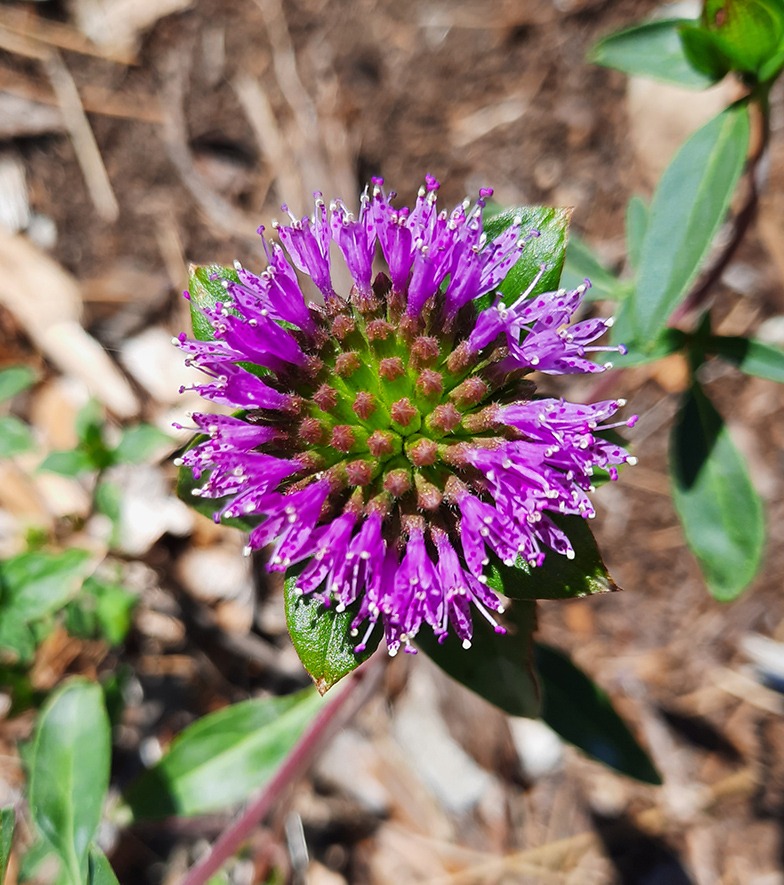
Restoration result: pollinator-friendly flowers blooming in Yosemite Valley. Photo: NPS.
… restore habitat in Yosemite Valley, including through a continuing project to shore up wetlands near the Lower River Amphitheater. This year, restoration crews are working to install a boardwalk, remove invasive plants and plant native vegetation, all with the goal of reconnecting fragmented habitat that could support species such as California red-legged frogs. Elsewhere in the Valley, NPS and CHIPS (Calaveras Healthy Impact Product Solutions) crews are continuing work to expand pollinator habitat.
… dream up and test new pop-up educational activities, including on-the-spot art projects. Unstaffed activities that visitors can happen upon turn out to be ideal in a year of social distancing!
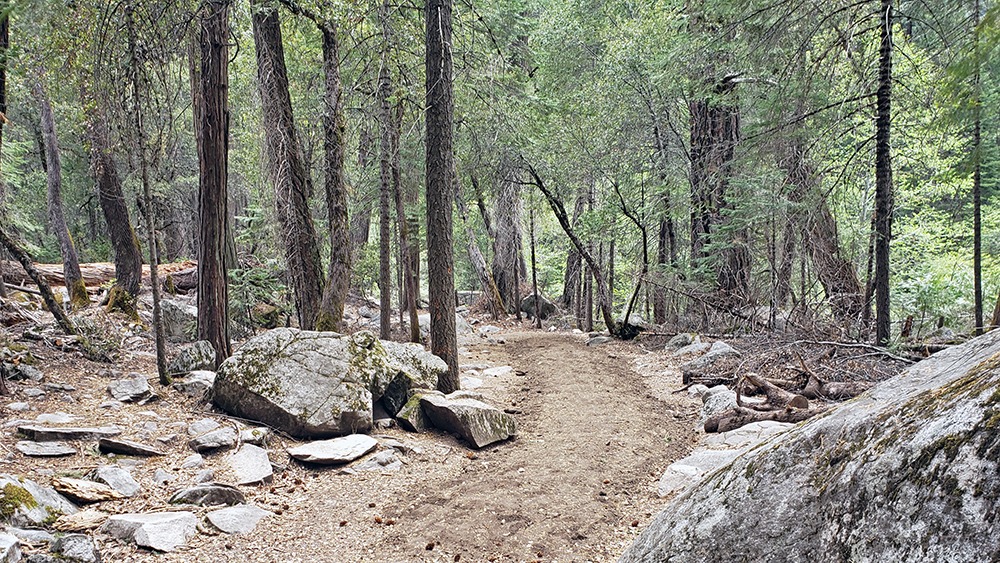
New trail tread near Mirror Lake. Photo: NPS.
… repair trails throughout the park. This spring and summer, NPS and California Conservation Corps crews repaired and improved dozens of miles of trails in Yosemite Valley and in the backcountry, including on the Tamarack Flat and Sunrise Lakes trails, while climber stewards worked on approach trails in Tuolumne Meadows. (The climbing stewardship team also removed discarded gear, dangerously loose rock and fire rings from El Capitan, and promoted COVID-19 safety and Leave No Trace practices among climbers.)
… embrace pandemic-inspired creativity and shift activities online. Adventure Risk Challenge, a donor-funded program, got creative with coronavirus precautions to enable a group of eight students to spend part of their summer learning, writing and hiking safely together in the Sierra Nevada. Youth programs such as WildLink, Junior Rangers and the Yosemite Leadership Program have experimented with virtual activities, climbing rangers have recorded educational content about work on and around the walls, and the Parsons Memorial Lodge Summer Series presenters shared their talks and readings with a much larger audience than usual, thanks to the wide reach of social media videos.
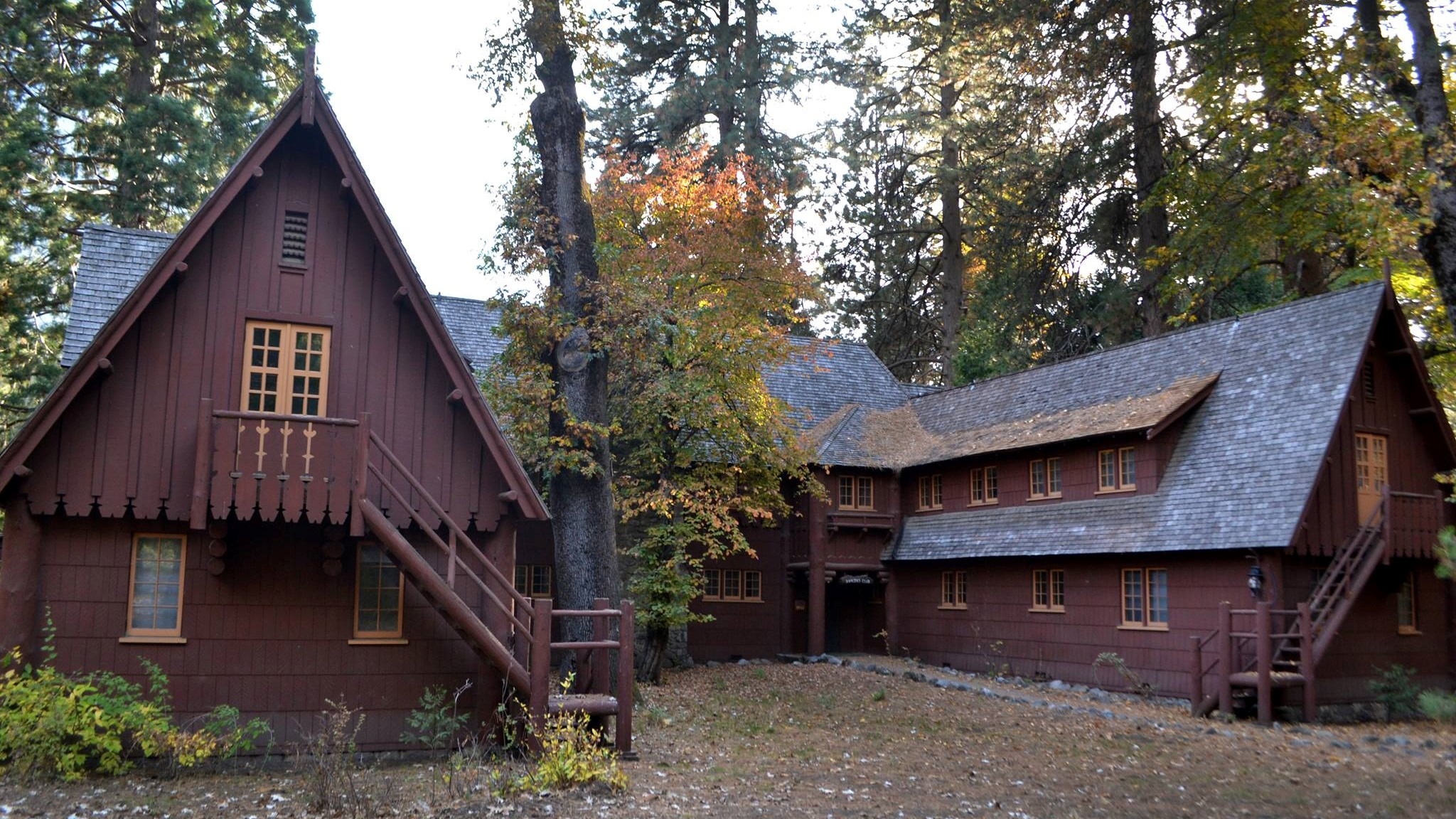
The historic Rangers’ Club in Yosemite Valley. Photo: NPS.
… celebrate a philanthropic milestone: the 100th anniversary of the Rangers’ Club, a two-story wooden building in Yosemite Valley that Stephen Mather donated to the NPS. In honor of the centennial, a historic preservation crew repaired the club’s main fireplace, which had fallen into disrepair.
… study the park’s mountain lion and Sierra Nevada red fox populations, with help from highly trained scat-sleuthing dogs, plus wildlife researchers, geneticists and more than 40 remote cameras.
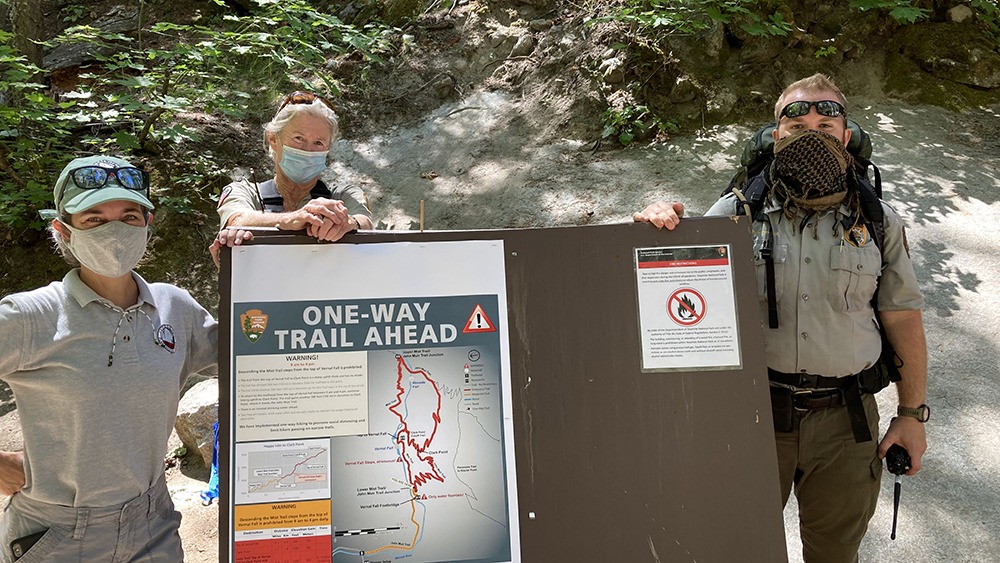
The Preventive Search and Rescue (PSAR) team helps spread key safety messages, including this summer’s one-way hiking guidance for the Mist Trail.
… keep people safe, through the Preventive Search and Rescue program, which has continued to focus primarily on the busy trails leading from the Valley to Half Dome. This year, PSAR’s safety focus has expanded beyond slippery rocks and dehydration to include pandemic-related precautions, such as one-way hiking on the Mist Trail, regular disinfection of the Vernal Fall footbridge water fountain, and a special set of protocols for the park’s emergency responders. Thanks to our staff for stepping up to help the PSAR team this year!
… and keep people moving. With park shuttles not running, the Yosemite Bike Share has gotten a serious workout this year. The program’s 30 bikes, stationed at two locations in the Yosemite Village area, provide an easy way for people to get around Yosemite Valley. The team introduced special cleaning measures to keep riders safe during the pandemic and created an interactive bike map of the Valley.
However you support the Conservancy — by donating, volunteering, signing up for a guided adventure, spreading the word about our work, or anything else — you’re making a meaningful difference for Yosemite. Keep an eye on our website for updates about our 2021 grants, adventures, art classes and volunteer opportunities.
And in the meantime, 2020 isn’t over yet: Yosemite still needs your support! Give today to help fund important work in the park.
Above: A researcher looks for signs of Sierra Nevada bighorn sheep during a 2020 survey in Yosemite’s Cathedral Range. Photo: Elsbeth Otto.

